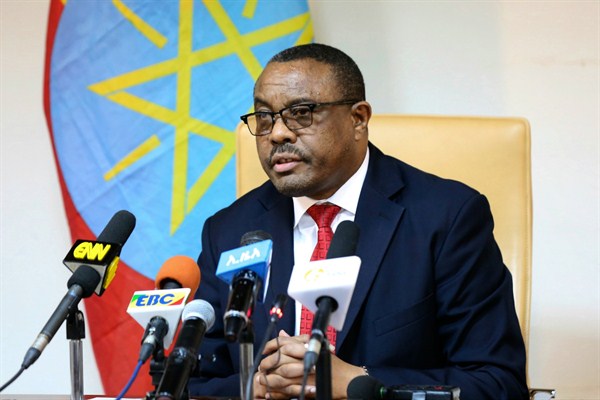After almost three years of deadly, sporadic crises, 2018 brought signs of much-needed change to Ethiopia when the government announced in early January that it would release many jailed journalists, politicians and protesters. But instead of opening up, Africa’s second-most populous country has returned to a formal state of emergency following the surprising resignation of Prime Minister Hailemariam Desalegn on Feb. 15. With an emboldened opposition, and divisions within the ruling party, Ethiopia now faces more uncertainty.
The chaotic chain of events underscores the difficulties for the ruling coalition, the Ethiopian Peoples’ Revolutionary Democratic Front, or EPRDF, in trying to manage reforms now that long-simmering discontent has developed into a formidable protest movement. Demonstrators mainly from the Oromo ethnic group, Ethiopia’s largest, have steadily proved their influence on national politics. If their demands aren’t met in the next phase of this turmoil, unrest may intensify.
The first question for the four-party EPRDF is whether to elect an Oromo prime minister to succeed Hailemariam. That would most likely be Abiy Ahmed, the new chairman of the Oromo People’s Democratic Organization, or OPDO, the largest party in parliament. A 180-member council of the EPRDF, split equally between its four parties, will reportedly meet later this week to start deciding on the next leader. Other possibilities include two experienced EPRDF operators: Hailemariam’s replacement as the head of a multiethnic southern party, Shiferaw Shigute; and Demeke Mekonnen, the deputy prime minister and chairman of the EPRDF’s Amhara party.

